E-Archive
Articles
in Vol. 14 - July Issue - Year 2013
New Family Of Throwing Wheels Type IR
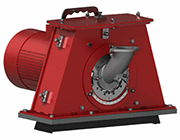
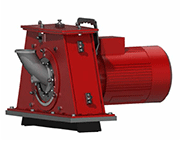
Family of throwing wheel type IR
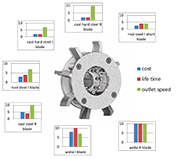
View of all types of blades in rotor and display of lifespan and properties
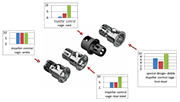
View of all different types of control cages and impellers
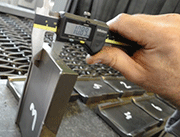
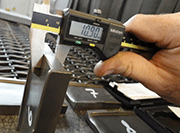
Measurement of blades wear

Wide blast
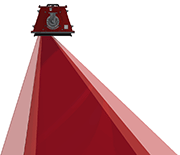
Normal blast
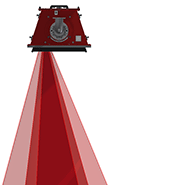
Focused blast
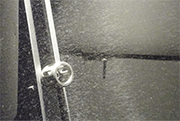
Blasting piece in the test machine
The company Gostol TST presents you with a new family of long-life throwing-wheel type IR. The throwing wheel was developed from scratch and a lot of effort was put into the development and production technology, to offer customers flexibility, quality and good price. This has been achieved with a wide range of different elements, which can be built into throwing wheels.
Description Of Throwing Wheel And Development
The main idea is the throwing wheel, which will meet the highest requirements of customers, and particularly customers who want a cost-efficient high-quality throwing wheel. Based on many years of experience, the company was able to determine the throwing wheelbase, which may be the same regardless of the persistence class. The throwing wheel can be configured in three different persistence classes - Basic, Standard and Superior. The composition of throwing wheels is defined by a legible mark on the throwing wheel label. In this way, the user can specify and identify the type of throwing wheel spare parts.
The Basic package includes blades, control cage, and impeller made of wear-resistant cast. Within this package you can choose blades I (straight) or blades R (curved).
In the Standard package, the installed blades are made from tool steel. Within this package you can also choose blades I (straight) or blades R (curved) and short blades. The impeller and control cage can be made from tool steel. You can also choose special types such as dual impeller and control cage. The lifespan of these elements is doubled in comparison to the Basic class.
In the Superior package blades, control cage and impeller made from tungsten carbide material are added. Within this package you can also choose blades I (straight) or blades R (curved). The lifetime of these elements is extremely long (long-life).
The throwing wheel has a modern method of attachment of the pipe, which enables easier removal of inlet pipe. The system for setting the control cage has a scale with degrees and the screw with which you can lock control cage position. The system is also universal for all types of control cages and impellers.
Protection of throwing wheel is done with shields made from wear-resistant cast. As a special version, Gostol TST also offers extended shields.
The throwing wheel has also a built-in non-contact seal with which leaks of abrasive are eliminated and friction, vibration and noise are reduced.
The objectives in the throwing wheel development were also technological optimizations in the manufacturing of the throwing wheel, which means using the latest technologies. It also means integration with an external provider, which ensures top quality in their field, such as: heat treatment of steel and fabrication of parts made from tungsten carbide. For some component parts, they have achieved significantly better manufacturing tolerances and thus achieved low vibration and noise of the throwing wheel.
For determining the characteristic and wear of the throwing wheel, a test machine has been specially built for throwing wheels, where operators can bring up data regarding throwing wheel mass flow, power of electromotor, angular speed of rotor, etc. They also measure the actual speed of abrasive particles. This is a unique measurement method, which requires very expensive equipment and is carried out in collaboration with an external development laboratory.
When measuring mass flow, the velocity they measured improved results in comparison to existing throwing wheels. This means that new throwing wheels have higher efficiency.
At the test machine test, the impact of jet at the target was also performed. They evaluated these data and developed a computer model of the jet.
Advantages For Customer
1. Multi-optional throwing wheels
All optional components are universal ¡V exchangeable with each other. Blades I can be replaced with blades R. They are also exchangeable with blades from Basic, Standard or Superior classes. Installation of other elements does not mean a new throwing wheel as all blades can be put in the same rotor. It is the same with the impeller and control cage. The blades can be turned according to desired direction of rotation CW (clockwise) or CCW (counter-clockwise). In this way, they have achieved a major advantage for the customer, as in the shortened time he can replace certain parts with which he can adjust the properties of the throwing wheel or extend service intervals.
2. Increased projective speed and efficiency
Gostol TST has achieved increased outlet speed of a jet by +30 % with blades R.
With the optimization of internal elements and with the use of top-quality materials, they achieved increased throwing wheel efficiency.
3. Improved blast pattern and wear
With the improved geometry of the main parts, they achieved more uniform abrasive patterns on the surface. With this, they achieved a uniform wear across the width of the blade and consequently longer lifespan.
4. Long service life
By choosing components from Standard or Superior classes, they achieve better characteristics as well as longer lifespan. Especially in the Superior class, wear parts achieve an extremely long lifespan.
5. Quick change system of parts
Beside the universal exchange of components among different classes, they had at the forefront also rapid changing of wear parts.
To replace the blades, they first remove the inlet pipe, control cage, impeller, ring, top cover and shield, and then beat out the blades from the rotor with hammer taps. Also, the removal of the rotor is not difficult. You have to remove the flange and the rotor extract from the shaft without removing the electro-motor.
6. Adapting the blast pattern to the client¡¦s application
Depending on the user¡¦s application, they can manufacture special control cages and impellers that determine the angle of the jet.
7. Blast pattern regulator
On the throwing wheel, they can also put a module with an automatic blast patterning regulator for adjustment of the control cage.
Testing For The Customer
In the newly built test machine, they perform preliminary tests for the customers. They define exact parameters for specific requirements such as power of throwing wheels, type of abrasive, achieved roughness Ra, and Almen test. For every moment, they can track outlet speed, motor power, and mass flow.
For Information: Gostol TST d.d.
Ciginj 63, 5220 Tolmin, Slovenia
Tel. +386.5.380 12 80
Fax +386.5.380 12 90
E-mail: sales@gostol-tst.eu
www.gostol-tst.eu



























